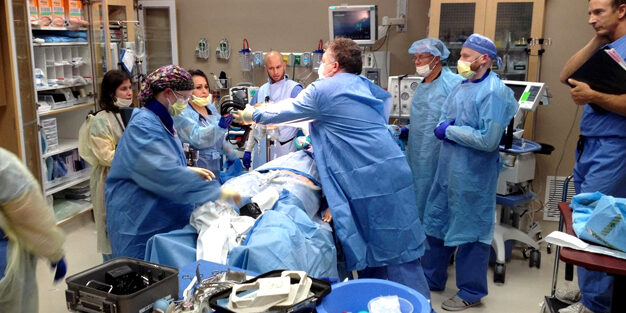Recently, a doctor writing in the Wall Street Journal highlighted a $10,000 charge for a trauma team activation that apparently never took place. In apost on my personal blog, I addressed some of the problems with the piece, but a $10,000 trauma team activation charge for an 11-day-old bruise on the head of a toddler seems excessive, even if the team had attended to the patient.
A trauma team consists of several members depending upon the resources of the hospital and its level of trauma center designation. Here are some of the people who may be involved:
- Trauma surgeon (sometimes in-house 24/7), emergency physician, residents, or mid-level providers
- Anesthesiologist or nurse anesthetist
- OR tech and circulating nurse
- Emergency or ICU nurses
- Nursing supervisor
- X-ray and CT techs
- Lab, blood bank
- Respiratory therapy
- Social worker, chaplain
When the trauma team is activated, the clinicians rush to the emergency department and the support personnel prepare for the worst. The doctors and nurses are usually assigned specific roles during patient resuscitation and evaluation that are gone over during drills and simulations. The idea is that the patient should be assessed as rapidly and thoroughly as possible so that appropriate treatment can be delivered in a timely way.
In discussing the expense, you must understand the difference between what a hospital charges (ie, the bill) and its costs, which are determined in mysterious ways. What a hospital charges for a trauma team activation is not related to the actual cost. An exposé by the Tampa Bay Times was revealing. Here are some quotes [emphasis added]:
“None of the hospital officials who spoke to the Times would itemize the expenses that go into their trauma fees. Some said they didn’t even have that kind of a document.”
“‘It’s not based on our cost,’ Robyn Farrington, a trauma administrator at Broward Health, told the Times in a 2013 interview.”
“Farrington said her hospital’s average fee of $4,473 was based more on ‘the market,’ or what other hospitals charged.”
“Recently, a hospital spokeswoman said the fee was based on actual costs,but these costs could not be separated line-by-line. I would like to have their accountant do my taxes next year.”
The investigation found that the average trauma team activation fee in Florida was $10,800, up from $2555 in 2006, with the most expensive hospital charging $33,000.
Similarly disparate hospital charges exist in Texas, where doctors are cashing in too. The Statesman of Austin reported that some surgeons receive as much as $7000 per day for being on call. Those are salary numbers even a hospital or insurance company CEO might envy.
According to a 2009 paper in the Journal of Trauma,“ there are no widely available data on the actual costs of readiness and standby that can be applied to determine ‘reasonable’ individual patient charges.”
That study said that the fee was established to help trauma centers recoup some of the losses they suffer when taking care of uninsured patients. Also, the team is often mobilized for what turns out to be insignificant injuries. The cost of a trauma team response may not be recovered for such injuries.
Note also that many of the trauma team (ED MDs, ED RNs, ancillary personnel, and others) are already present and not really costing the hospital extra money. Centers for Medicare and Medicare Services rules state that only activations for outpatients are reimbursable. Activations for admitted patients come under the admission DRG and thus are not paid for.
Yes, hospitals deserve something for all the free care they give to trauma patients, but there must be a better way than simply allowing whatever the market will bear.




